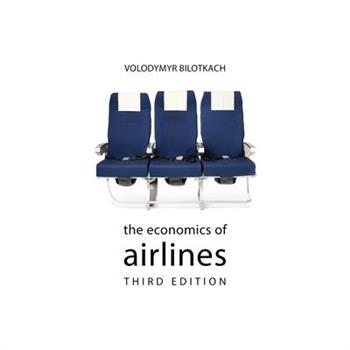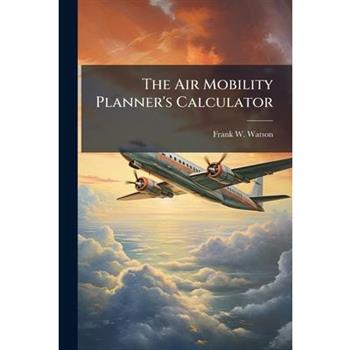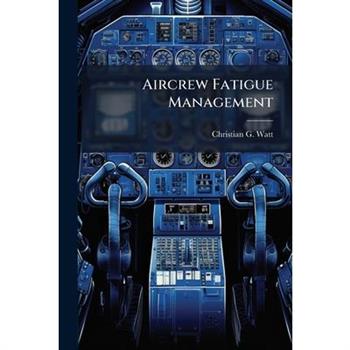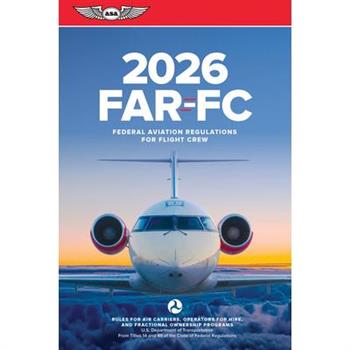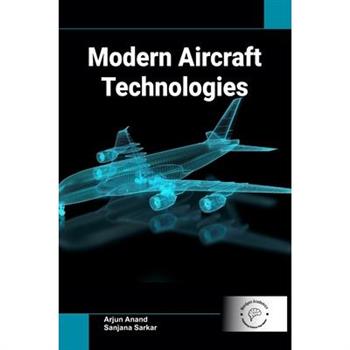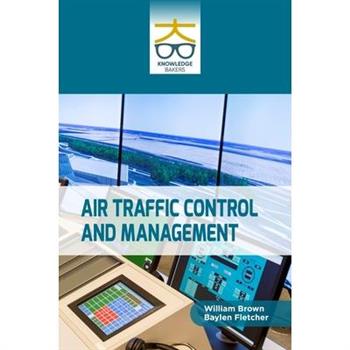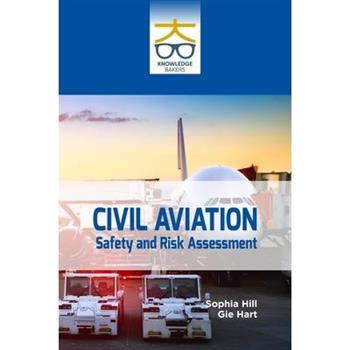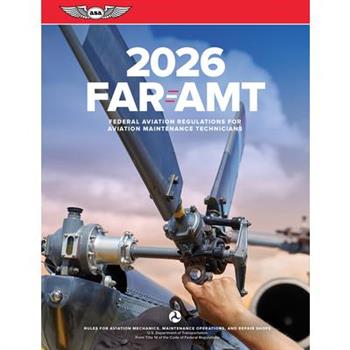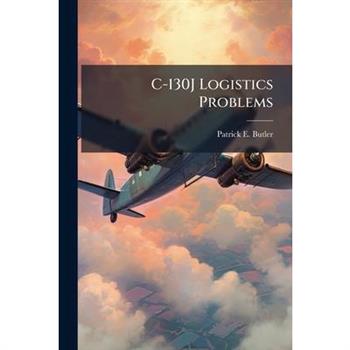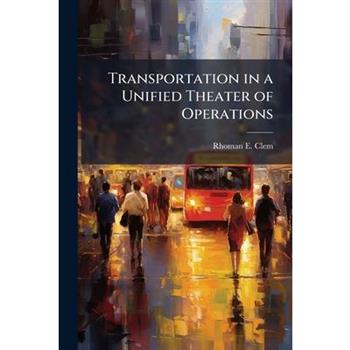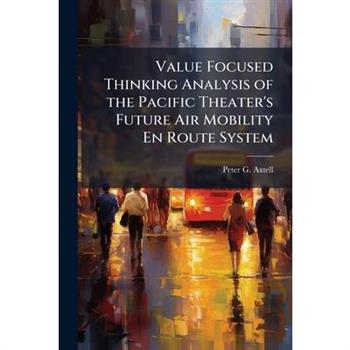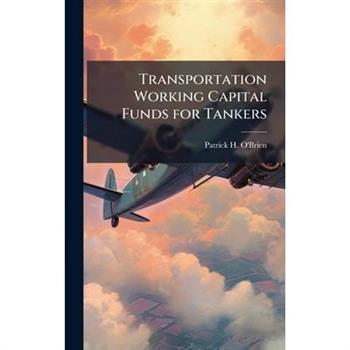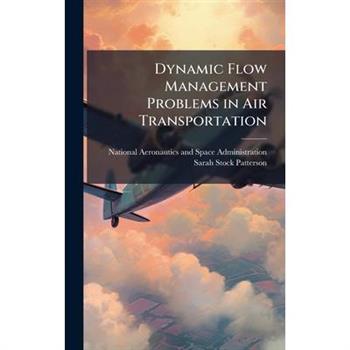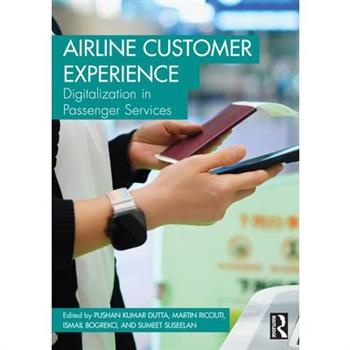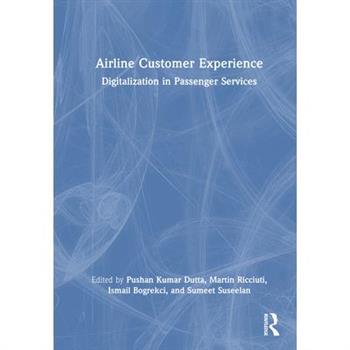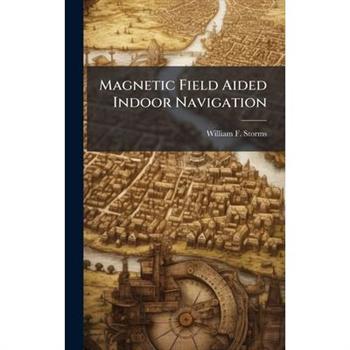Evaluating Operational Readiness for Fixed-Wing Tactical Aviation Units
Analysis in this monograph concludes that the MCCRES, while sound as a framework for evaluating tactical readiness, is out of date and fails to adequately evaluate operational readiness. The Marine Corps Combat Readiness Evaluation System should be replaced by a unit training and readiness program to evaluate tactical readiness and as a way to maintain internal Marine Corps standards. Operational readiness should be evaluated through a combination of the unit training and readiness program, CGI, and new (recommended in this monograph) Marine Corps Operational Readiness Evaluation System. Marine TacAir must integrate changes at the operational level with other systems in the Marine Corps, the Navy, and the joint force to be successful . The results of this monograph have applicability for Marine tactical aviation, for the Marine Corps, and for the joint force. The hallmark of the Marine Corps aviation has always been its training and standards and a capability-based Marine Corps needs to further expand its training and standards at the operational level. A critical piece of this effort is to develop an operational readiness evaluation system to assess operational reach, agility, adaptability, integrated operations, and interoperability.This work has been selected by scholars as being culturally important, and is part of the knowledge base of civilization as we know it. This work was reproduced from the original artifact, and remains as true to the original work as possible. Therefore, you will see the original copyright references, library stamps (as most of these works have been housed in our most important libraries around the world), and other notations in the work.This work is in the public domain in the United States of America, and possibly other nations. Within the United States, you may freely copy and distribute this work, as no entity (individual or corporate) has a copyright on the body of the work.As a reproduction of a historical artifact, this work may contain missing or blurred pages, poor pictures, errant marks, etc. Scholars believe, and we concur, that this work is important enough to be preserved, reproduced, and made generally available to the public. We appreciate your support of the preservation process, and thank you for being an important part of keeping this knowledge alive and relevant.
The Expeditionary Aerospace Force and Air Force Reserve Training
Although the Air Reserve Component (Air National Guard and Air Force Reserve), in its entirety, is critically important to the success of the Expeditionary Aerospace Force (EAF) construct, this research project only addresses training issues unique to the Air Force Reserve Command (AFRC). In so doing, this document analyzes and presents the training challenges facing the Air Force Reserve as it attempts to fulfill and meet its expected role under the EAF concept. It proposes solutions that will be useful to AFRC leadership and its force planning staffs in determining how best to educate and train the reservist. Finally, a tertiary purpose of this project is to present an evaluation of the research performed, and where pertinent, to call attention to those findings which provide advances in the current state of AFRC education and training. To conduct a meaningful evaluation of the subject matter, qualitative research was conducted to gain information on AFRC expeditionary operations to date. This document is an assessment based on the researcher's own data analysis because, to date, AFRC has not systematically monitored EAF training results. Furthermore, the lack of specific measurable goals in some education and training areas could hamper future assessment efforts.This work has been selected by scholars as being culturally important, and is part of the knowledge base of civilization as we know it. This work was reproduced from the original artifact, and remains as true to the original work as possible. Therefore, you will see the original copyright references, library stamps (as most of these works have been housed in our most important libraries around the world), and other notations in the work.This work is in the public domain in the United States of America, and possibly other nations. Within the United States, you may freely copy and distribute this work, as no entity (individual or corporate) has a copyright on the body of the work.As a reproduction of a historical artifact, this work may contain missing or blurred pages, poor pictures, errant marks, etc. Scholars believe, and we concur, that this work is important enough to be preserved, reproduced, and made generally available to the public. We appreciate your support of the preservation process, and thank you for being an important part of keeping this knowledge alive and relevant.
The Air Mobility Planner's Calculator
In today's Air Force, we are constantly faced with meeting the mission under limited budget and equipment constraints. Any tools that make completing the mission easier are highly sought after, and rightfully so. The Air Mobility Planner's Calculator (AMPCALC) is one such tool. It gives the mobility planner flexibility in planning by allowing several different situations to be modeled. This paper recommends improvements to the model and provides the verification and validation of the model in an attempt to prove that the model is a useful tool for Air Mobility Command and the United States Air Force.This work has been selected by scholars as being culturally important, and is part of the knowledge base of civilization as we know it. This work was reproduced from the original artifact, and remains as true to the original work as possible. Therefore, you will see the original copyright references, library stamps (as most of these works have been housed in our most important libraries around the world), and other notations in the work.This work is in the public domain in the United States of America, and possibly other nations. Within the United States, you may freely copy and distribute this work, as no entity (individual or corporate) has a copyright on the body of the work.As a reproduction of a historical artifact, this work may contain missing or blurred pages, poor pictures, errant marks, etc. Scholars believe, and we concur, that this work is important enough to be preserved, reproduced, and made generally available to the public. We appreciate your support of the preservation process, and thank you for being an important part of keeping this knowledge alive and relevant.
Hybrid Airships
This paper examines the potential use of hybrid airships (HA) in an intratheater humanitarian assistance scenario. A linear programming model was used to study various mixes of hybrid airships, conventional airlifters, and sealift vessels. The main goal was minimizing the time needed to move 200 tons of cargo each day. The secondary aim was determining whether HA might be employed at less expense than conventional airlift or sealift assets. The analysis determined that HA can be used to effectively and efficiently augment USTRANSCOM's current airlift and sealift capability. For medium-range distances (approximately 2,500 nautical miles one way), as many as five HA (each capable of lifting 40 to 50 tons) can help reduce or minimize total cargo movement time. Based on 2011 operating costs, if expenses for hybrid airships are held below $3,000 per hour, they can be cheaper to employ than C-17s. If small cargo totals (i.e. 200 tons) must be moved as quickly as possible (or during sealift transit), then HA operating costs of $3,000 per hour or less also make them a less costly option compared to sealift. In comparison to C-5 and C-130 aircraft, HA "break even" hourly operating costs might be as high as $5,000.This work has been selected by scholars as being culturally important, and is part of the knowledge base of civilization as we know it. This work was reproduced from the original artifact, and remains as true to the original work as possible. Therefore, you will see the original copyright references, library stamps (as most of these works have been housed in our most important libraries around the world), and other notations in the work.This work is in the public domain in the United States of America, and possibly other nations. Within the United States, you may freely copy and distribute this work, as no entity (individual or corporate) has a copyright on the body of the work.As a reproduction of a historical artifact, this work may contain missing or blurred pages, poor pictures, errant marks, etc. Scholars believe, and we concur, that this work is important enough to be preserved, reproduced, and made generally available to the public. We appreciate your support of the preservation process, and thank you for being an important part of keeping this knowledge alive and relevant.
An Analysis of the Impact of Base Support Resources on the Availability of Air Mobility Command Aircraft
Over the past decade, the nation's military has grown increasingly reliant upon strategic airlift capability. In the post-Cold War era, military doctrine has shifted from an inventory policy favoring overseas basing and prepositioned materiel to a transportation policy that concentrates on the rapid deployment of forces. Much of the responsibility for providing timely global mobility belongs to the Air Mobility Command (AMC) and its fleet of strategic cargo aircraft. Despite the emphasis that has been placed on strategic airlift capability, several recent studies indicate the DoD may possess insufficient lift capacity to meet current theater requirements. The AMC Directorate of Logistics is responsible for ensuring AMC aircraft are available to accomplish the mission. Currently, however, the organization lacks an objective tool for assessing the impact of proposed operations on the health of the fleet. To improve this process, the Directorate has initiated the development of a Mobility Aircraft Availability Forecast (MAAF) simulation model designed to identify alternatives and associated impacts on aircraft availability, manpower, and cost. This research seeks to assist the MAAF development effort by identifying and demonstrating how different base support factors impact the availability of AMC aircraft. To address this research objective, multiple simulation models were developed using the Airfield Simulation Tool (AST). The impact of changing resource levels was assessed for different locations and aircraft arrival profiles. Results of this research yield practical implications for developers of the MAAF model and air mobility planners.This work has been selected by scholars as being culturally important, and is part of the knowledge base of civilization as we know it. This work was reproduced from the original artifact, and remains as true to the original work as possible. Therefore, you will see the original copyright references, library stamps (as most of these works have been housed in our most important libraries around the world), and other notations in the work.This work is in the public domain in the United States of America, and possibly other nations. Within the United States, you may freely copy and distribute this work, as no entity (individual or corporate) has a copyright on the body of the work.As a reproduction of a historical artifact, this work may contain missing or blurred pages, poor pictures, errant marks, etc. Scholars believe, and we concur, that this work is important enough to be preserved, reproduced, and made generally available to the public. We appreciate your support of the preservation process, and thank you for being an important part of keeping this knowledge alive and relevant.
Feasibility of Requalifying Yokota C-130s As Airland Only
In 1997, the Air Mobility Command Commander convened a Tiger Team to develop a road map for C-130s. The command was concerned the C-130 was spending too much time training for its airdrop mission and not enough time flying revenue generating Transportation Working Capital Fund (TWCF) missions. Despite this concern, one of the primary recommendations in the Tiger Team report was to keep all C-130 aircrews 100% formation airdrop and airland qualified. The purpose of this paper is to examine the feasibility and impact of eliminating the airdrop qualification of C-130 aircrews at Yokota AB Japan. The paper investigates three questions in exploring this research problem. The first investigative question examines the feasibility of combat delivery C-130s meeting wartime requirements if Yokota is requalified as airland only. The second investigative question examines if requalifying Yokota C-130s risks the Pacific TWCF and Joint Airborne/Air Transportability Training (JA/ATT) peacetime requirements. The final investigative question examines the impact requalifying Yokota has on training requirements and whether or not Yokota needs to fence training aircraft. In the end, the paper concludes that it is feasible to requalifying Yokota as airland only. The theater Commander in Chief (CINC) still has an effective force to meet all wartime requirements and an increased capability to meet peacetime requirements. At the same time, the requirements are met more efficiently, as savings are realized through reduced training and deployment costs.This work has been selected by scholars as being culturally important, and is part of the knowledge base of civilization as we know it. This work was reproduced from the original artifact, and remains as true to the original work as possible. Therefore, you will see the original copyright references, library stamps (as most of these works have been housed in our most important libraries around the world), and other notations in the work.This work is in the public domain in the United States of America, and possibly other nations. Within the United States, you may freely copy and distribute this work, as no entity (individual or corporate) has a copyright on the body of the work.As a reproduction of a historical artifact, this work may contain missing or blurred pages, poor pictures, errant marks, etc. Scholars believe, and we concur, that this work is important enough to be preserved, reproduced, and made generally available to the public. We appreciate your support of the preservation process, and thank you for being an important part of keeping this knowledge alive and relevant.
Mobility Pilot Development
This study centers on a new training program devised and implemented by the Air Mobility Command and its effects on the Air Reserve component. Entitled Mobility Pilot Development, the program intends to streamline the pilot training process of the various mobility aircraft fleets of the United States Air Force. The purpose of this study is to focus on the effects of Mobility Pilot Development on the C-130 aircraft within the Air National Guard and Air Force Reserve as these components make up 70 percent of the USAF's tactical airlift fleet. The findings of this focus are compared against the C-130 active component as well as the KC-135 and C-17 fleets, as they are both mainstays of the Air Mobility Command.This work has been selected by scholars as being culturally important, and is part of the knowledge base of civilization as we know it. This work was reproduced from the original artifact, and remains as true to the original work as possible. Therefore, you will see the original copyright references, library stamps (as most of these works have been housed in our most important libraries around the world), and other notations in the work.This work is in the public domain in the United States of America, and possibly other nations. Within the United States, you may freely copy and distribute this work, as no entity (individual or corporate) has a copyright on the body of the work.As a reproduction of a historical artifact, this work may contain missing or blurred pages, poor pictures, errant marks, etc. Scholars believe, and we concur, that this work is important enough to be preserved, reproduced, and made generally available to the public. We appreciate your support of the preservation process, and thank you for being an important part of keeping this knowledge alive and relevant.
Evolving Joint Intratheater Airlift
The non-sexy nature of intratheater airlift does not draw much attention to its results. Thousands of personnel have returned home safely from two wars sustained half way around the world for almost a decade. Still, it is not truly a Joint enterprise. The Army and Marine Corps have their own organic fleets and the Air Force has none. Air Force planes are dedicated to the common user system, which sees little contribution from the other services. This system is managed by Air Force command and control, and it falls under the umbrella of Joint doctrine. There are significant gaps between the doctrine and actual outcomes. This paper examines the underlying issues and context to distill lessons aimed at better Joint intratheater airlift. Six enduring narratives are presented: roles and missions debates, effectiveness versus efficiency, support for the ground component, strategic versus tactical, centralized versus de-centralized and common user versus direct support. This framework in turn generates several broad recommendations: 1) The Air Force should resolve the direct support issue once and for all; 2) Intratheater airlift should be managed strategically while enabling de- centralized success; and 3) The key is execution management.This work has been selected by scholars as being culturally important, and is part of the knowledge base of civilization as we know it. This work was reproduced from the original artifact, and remains as true to the original work as possible. Therefore, you will see the original copyright references, library stamps (as most of these works have been housed in our most important libraries around the world), and other notations in the work.This work is in the public domain in the United States of America, and possibly other nations. Within the United States, you may freely copy and distribute this work, as no entity (individual or corporate) has a copyright on the body of the work.As a reproduction of a historical artifact, this work may contain missing or blurred pages, poor pictures, errant marks, etc. Scholars believe, and we concur, that this work is important enough to be preserved, reproduced, and made generally available to the public. We appreciate your support of the preservation process, and thank you for being an important part of keeping this knowledge alive and relevant.
Determining Pilot Manning for Bomber Longevity
In support of US Air Force efforts to conserve resources without sacrificing capability, this research examines the question of whether the 509th Bomb Wing could continue to provide maximum combat capability with fewer assigned pilots. During peacetime, pilot proficiency training comprises the majority of annual flying hours for the small B-2 bomber fleet. Optimal pilot manning will decrease the accumulation of excess wear on the airframes; helping to extend the viable life of the B-2 fleet and preserve the deterrent and combat capabilities that it provides to the United States.The operations and maintenance activity flows for B-2 aircraft and pilots in a notional sustained combat scenario are constructed in an Arena discrete-event simulation model. The model provides the capability to determine optimum manning levels for combat-qualified B-2 pilots across a range of fleet mission capable rates. Determination of actual optimum manning levels is sensitive to duration and probability parameters which are unavailable for use in this work. Notional parameter estimates are used to assess combat mission capability and pilot manning.This work has been selected by scholars as being culturally important, and is part of the knowledge base of civilization as we know it. This work was reproduced from the original artifact, and remains as true to the original work as possible. Therefore, you will see the original copyright references, library stamps (as most of these works have been housed in our most important libraries around the world), and other notations in the work.This work is in the public domain in the United States of America, and possibly other nations. Within the United States, you may freely copy and distribute this work, as no entity (individual or corporate) has a copyright on the body of the work.As a reproduction of a historical artifact, this work may contain missing or blurred pages, poor pictures, errant marks, etc. Scholars believe, and we concur, that this work is important enough to be preserved, reproduced, and made generally available to the public. We appreciate your support of the preservation process, and thank you for being an important part of keeping this knowledge alive and relevant.
Aircrew Fatigue Management
The purpose of this paper is to examine the problem of aircrew fatigue management and provide recommendations based on the latest advances on the subject. My research method included literature research and interviews with field professionals. Much of my research led to literature written by medical professionals and aerospace physiologists, with relatively little by aviators. This paper is intended to complement the plethora of existing information on the subject from an aircrew perspective. Research shows that aircrew fatigue is still a significant concern. The author believes that aircrew fatigue will become even more important to manage due to the increased cognitive requirements of the net-centric warrior. Further, management will become increasingly problematic as the number of air assets available to respond to 24/7 tasking and to maintain 24/7 pressure on the enemy decreases.This work has been selected by scholars as being culturally important, and is part of the knowledge base of civilization as we know it. This work was reproduced from the original artifact, and remains as true to the original work as possible. Therefore, you will see the original copyright references, library stamps (as most of these works have been housed in our most important libraries around the world), and other notations in the work.This work is in the public domain in the United States of America, and possibly other nations. Within the United States, you may freely copy and distribute this work, as no entity (individual or corporate) has a copyright on the body of the work.As a reproduction of a historical artifact, this work may contain missing or blurred pages, poor pictures, errant marks, etc. Scholars believe, and we concur, that this work is important enough to be preserved, reproduced, and made generally available to the public. We appreciate your support of the preservation process, and thank you for being an important part of keeping this knowledge alive and relevant.
Global Positioning System Requirements Update Dilemma
This paper discusses the dilemma of increasing GPS requirements from the current requirement for 24-satellites to a larger, more stringent requirement of 30 satellites. The paper will first discuss the existing GPS Standard Positioning Service (SPS) Performance Standard (PS) requirement and analyze the currently provided GPS level of service. The current GPS SPS PS was last approved in Sep 2008, yet improvements to the GPS command and control system and an increased constellation size (currently 35 GPS satellites on orbit) since that time have allowed the currently provided GPS level of service to far exceed the requirement. This paper then discusses how a commitment to increase the required GPS constellation size and placements within the orbits would benefit both military and civilian users worldwide. For example, "sky-impaired" warriors, such as those on the slopes of mountains in Afghanistan or the urban streets of a Middle East city, have degraded availability with only 24 satellites due to obstruction of 45 to 60 degrees from mountain slopes. Updating and increasing the constellation size to 30 satellites would increase the number of satellites in view (increased availability due to the increased number of satellites available to obtain a GPS solution) to horizon line of sight disadvantaged users. The USAF is committed to maintaining only 24 GPS satellites, and is obtaining suboptimal performance since it is currently flying them in a constellation optimized for only 24 primary slots.This work has been selected by scholars as being culturally important, and is part of the knowledge base of civilization as we know it. This work was reproduced from the original artifact, and remains as true to the original work as possible. Therefore, you will see the original copyright references, library stamps (as most of these works have been housed in our most important libraries around the world), and other notations in the work.This work is in the public domain in the United States of America, and possibly other nations. Within the United States, you may freely copy and distribute this work, as no entity (individual or corporate) has a copyright on the body of the work.As a reproduction of a historical artifact, this work may contain missing or blurred pages, poor pictures, errant marks, etc. Scholars believe, and we concur, that this work is important enough to be preserved, reproduced, and made generally available to the public. We appreciate your support of the preservation process, and thank you for being an important part of keeping this knowledge alive and relevant.
Locating Search and Rescue Stations in the Aegean and Western Mediterranean Regions of Turkey
The service of present Search and Rescue (SAR) stations in the Aegean and the Western Mediterranean regions of Turkey are not sufficient to meet the demands of the Turkish Air Force. This research seeks to find the optimum location of new SAR stations. The number of SAR stations required to cover all areas of operation becomes a very decisive element in finding the optimal coverage of the operation area by these stations. The problem of finding the optimum SAR locations can be modeled as a maximal covering location problem (MCLP). Additional constraints are added to set standards on various issues in the regions. Main emphasis is to given to finding the minimum number of SAR locations that achieves maximum coverage in the operation area. Bonus values that indicate the importance of covering demand points are also included for analysis purposes. The model is coded and solved with an optimization software. The solution shows the location of SAR stations and the total coverage in the area based on the operational capacity of SAR units. Several scenarios are examined and the results are then analyzed and presented.This work has been selected by scholars as being culturally important, and is part of the knowledge base of civilization as we know it. This work was reproduced from the original artifact, and remains as true to the original work as possible. Therefore, you will see the original copyright references, library stamps (as most of these works have been housed in our most important libraries around the world), and other notations in the work.This work is in the public domain in the United States of America, and possibly other nations. Within the United States, you may freely copy and distribute this work, as no entity (individual or corporate) has a copyright on the body of the work.As a reproduction of a historical artifact, this work may contain missing or blurred pages, poor pictures, errant marks, etc. Scholars believe, and we concur, that this work is important enough to be preserved, reproduced, and made generally available to the public. We appreciate your support of the preservation process, and thank you for being an important part of keeping this knowledge alive and relevant.
Air Force Reserve Aerial Port Contingency Training
This research paper attempts to present the most effective training approaches for reserve aerial port contingency training based upon the combined analysis of five Air Force Reserve aerial port squadrons. Focus of the analysis centered on how these units prepare their members in learning and maintaining proficiency for carrying out the "Global Reach" mission by utilizing existing resources and the limited amount of time to do so. The 26th, 46th, 53rd, 76th, and 92nd aerial port squadrons were studied. These units were chosen to be representative of the types of units (associate, unit equipped, colocated, and geographically separated) seen throughout the Air Force Reserve. A variety of activities were used to evaluate these units, including squadron commander and unit member surveys, personal interviews, and site visits during unit training assemblies. Information gathered included: unit size, wartime tasking, demographics, physical makeup, and types of training approaches utilized. Particular emphasis was placed upon unit innovation in carrying out this training. As a result, three categories, Joint Training, In- House proficiency exercises, and Modeling, emerged and appear to be the most relevant in best utilizing the limited unit training time available and to provide proficiency in contingency tasks.This work has been selected by scholars as being culturally important, and is part of the knowledge base of civilization as we know it. This work was reproduced from the original artifact, and remains as true to the original work as possible. Therefore, you will see the original copyright references, library stamps (as most of these works have been housed in our most important libraries around the world), and other notations in the work.This work is in the public domain in the United States of America, and possibly other nations. Within the United States, you may freely copy and distribute this work, as no entity (individual or corporate) has a copyright on the body of the work.As a reproduction of a historical artifact, this work may contain missing or blurred pages, poor pictures, errant marks, etc. Scholars believe, and we concur, that this work is important enough to be preserved, reproduced, and made generally available to the public. We appreciate your support of the preservation process, and thank you for being an important part of keeping this knowledge alive and relevant.
Remote Pilot - Small Unmanned Aircraft Systems (sUAS) Study Guide FAA-G-8082-22
FAA Remote Pilot - Small Unmanned Aircraft Systems (sUAS) Study Guide ✈️Edition: FAA-G-8082-22Get fully prepared for your Remote Pilot Certificate with sUAS Rating with this official FAA study guide. Whether you're aiming to become a certified drone pilot for work, business, or personal projects, this guide gives you all the knowledge you need to pass the FAA Airman Knowledge Test with confidence. ✅What's Inside?This comprehensive guide is organized according to the exact knowledge areas tested under 14 CFR Part 107, Section 107.73(a), ensuring you focus on what matters most: 1️⃣ FAA Regulations - Privileges, limitations & operational rules for sUAS.2️⃣ Airspace & Flight Restrictions - Understanding classifications & safe operations.3️⃣ Aviation Weather - How weather impacts drone performance. ☀️4️⃣ Aircraft Loading - Safe weight & balance practices.5️⃣ Emergency Procedures - How to respond under pressure. 6️⃣ Crew Resource Management - Working effectively as a drone team.7️⃣ Radio Communication - Clear & professional communication protocols. 8️⃣ Performance Calculations - Determining flight capabilities.9️⃣ Drugs & Alcohol - Recognizing physiological risks. Decision-Making & Judgment - Staying safe and legal in the skies.1️⃣1️⃣ Airport Operations - Procedures for safe airport-area flights.1️⃣2️⃣ Maintenance & Preflight Checks - Ensuring your drone is airworthy. Why Choose This Guide?Official FAA publication Covers everything on the Part 107 testClear, structured, and easy to followPerfect for both beginners and experienced drone pilotsGet ready to ace your Part 107 test and take your drone piloting skills to new heights!
Remote Pilot - Small Unmanned Aircraft Systems (sUAS) Study Guide FAA-G-8082-22
FAA Remote Pilot - Small Unmanned Aircraft Systems (sUAS) Study Guide ✈️Edition: FAA-G-8082-22Get fully prepared for your Remote Pilot Certificate with sUAS Rating with this official FAA study guide. Whether you're aiming to become a certified drone pilot for work, business, or personal projects, this guide gives you all the knowledge you need to pass the FAA Airman Knowledge Test with confidence. ✅What's Inside?This comprehensive guide is organized according to the exact knowledge areas tested under 14 CFR Part 107, Section 107.73(a), ensuring you focus on what matters most: 1️⃣ FAA Regulations - Privileges, limitations & operational rules for sUAS.2️⃣ Airspace & Flight Restrictions - Understanding classifications & safe operations.3️⃣ Aviation Weather - How weather impacts drone performance. ☀️4️⃣ Aircraft Loading - Safe weight & balance practices.5️⃣ Emergency Procedures - How to respond under pressure. 6️⃣ Crew Resource Management - Working effectively as a drone team.7️⃣ Radio Communication - Clear & professional communication protocols. 8️⃣ Performance Calculations - Determining flight capabilities.9️⃣ Drugs & Alcohol - Recognizing physiological risks. Decision-Making & Judgment - Staying safe and legal in the skies.1️⃣1️⃣ Airport Operations - Procedures for safe airport-area flights. 1️⃣2️⃣ Maintenance & Preflight Checks - Ensuring your drone is airworthy. Why Choose This Guide?Official FAA publicationCovers everything on the Part 107 testClear, structured, and easy to followPerfect for both beginners and experienced drone pilotsGet ready to ace your Part 107 test and take your drone piloting skills to new heights!
Modern Aircraft Technologies
-It focuses on various modern technologies used in the aircraft industry and discusses the progress in experimental research of turbine aeroacoustics, which is critical in reducing noise pollution caused by aircraft engines. -It discusses about active flow control using plasma actuators, a technology used in modern aircraft for reducing drag and improving fuel efficiency and also explores the loads simulator system used for testing and qualification of flight actuators. -Focuses on a self-healing control framework against actuator faults in single-rotor unmanned helicopters, which can improve the reliability and safety of these aircraft.-Discusses a hierarchical tracking controller for quadrotor without linear velocity measurements, which is a critical technology for improving the control and stability of quadrotor unmanned aerial vehicles.-Explores the effects of aircraft noise on behavior and physiology of rats, which is a crucial aspect of environmental impact assessment for aircraft noise.-The book is an essential read for researchers, engineers, and students interested in the field of aerospace engineering.
Air Traffic Control And Management
This book covers various topics related to air traffic management and control including the history, regulations, and stakeholders involved in the aviation industryIt explores the importance of occupational health and safety in air traffic management and how it affects the performance and efficiency of air traffic controllers. It also covers the basics of deep learning networks and their applications in air traffic managementIt could be helpful for aviation management and regulatory bodies to understand the current state and future trends of air traffic management and could be a valuable resource for students and academics studying aviation or related fields, including engineering, computer science, and management.
Flight Control
A must for the computational mathematician to understand the background, motivation, and the significance of the geometric algorithm.Contains a computational tool and real-life example carried through the chapters.The book is a valuable reference book for the engineers, technicians and researchers who are engaged in analysis, design and integrated application of flight control systems.
Civil Aviation
-Discusses the importance of risk assessment in civil aviation and its application to the operation of civil aircraft and also explores the different types of hazards that can arise during the operation of aircraft, such as weather, technical failures, and human errors. -Focuses on the risk and economic analysis of commercial aero engines and also explains the various types of risks associated with the design, development, and operation of aero engines, such as technical failures, maintenance costs, and environmental impacts. -Describes the safety and risk assessment of civil aircraft during operation and examines the various factors that can impact the safety of civil aircraft, such as design, maintenance, and operational factors. -Focuses on design approaches for increasing the safety and decreasing the risk of civil aircraft operation and explores the different design features that can improve the safety of civil aircraft, such as redundancy, fault-tolerance, and system integration. -Provides the effect of random load on the life prediction of high-temperature ceramic matrix composites and explores the different types of loads that can impact the durability of these materials, such as thermal cycles, mechanical loads, and environmental exposures. -This book is an excellent reference for aviation professionals, regulators, and policymakers involved in the aviation industry and also a valuable resource for anyone involved in the aviation industry or interested in aviation safety.
Fuel Cell and Hydrogen Technologies in Maritime Transportation
Fuel Cell and Hydrogen Technologies in Maritime Transportation looks at the role of hydrogen and fuel cells in creating a more sustainable and environmentally friendly maritime industry. It explores how hydrogen can revolutionize marine propulsion and highlights innovations and solutions for greener energy, including onboard hydrogen production, hybrid energy systems, and advanced fuel cell technologies. The book also covers performance and environmental analysis techniques for fuel cell-powered marine vessels, different fuel options, regulatory and safety considerations, and port-based hydrogen infrastructure. It provides insights into developing hydrogen infrastructure at ports and harbors and the economic implications and ecological benefits of adopting green hydrogen in maritime transportation. This resource is a must-read for engineers, maritime professionals, researchers, and marine enthusiasts who want to stay up-to-date with the changing landscape of sustainable marine transportation. Provides guidelines on the design and modeling of fuel cell-powered marine vessels; Discusses hydrogen safety and storage options; Includes detailed case studies and life cycle assessments for hydrogen-fueled marine vehicles.
Far-Amt 2026
ASA's FAR-AMT is the most accurate and reliable regulatory reference on the market for aviation maintenance technicians (AMTs), maintenance operations, and repair shops. This 2026 edition of AMT-related Federal Aviation Regulations (FAR) from Title 14 of the Code of Federal Regulations clearly marks all changes from the previous year. Also contains additional mechanic references such as some of the most often used FAA Advisory Circular publications and FAA Orders. This edition includes: Title 14 Parts 1, 3, 5, 13, 21, 23, 26, 27, 33, 34, 35, 38, 39, 43, 45, 47, 48, 65, 91, 110, 119, 121 (J, L, Z, AA, DD), 125, 135, 145, 147, and 183 Advisory Circulars 20-62E, 20-109B, 21-12C, 39-7D, 43-9C, and 43.9-1G Changes and updates since last edition clearly marked Tabs printed in page margins for quick reference Comprehensive FAR index ASA's FAR/AIM series has been the standard regulatory reference of the industry for more than 80 years. ASA consolidates the FAA regulations and procedures into easy-to-use reference books full of information pertinent to pilots, flight crew, and aviation mechanics.
AR 525璽€"93
The United States Army Publishing Directorate is the Army's leader in publishing and delivering informational products worldwide. Their main mission is to supply official authenticated information to enhance the readiness of the total force. Some product topics include: Army Regulations, Engineering Technical Manuals, Administrative Publications, Circulars and Pamphlets. This is one of their documents.This work has been selected by scholars as being culturally important, and is part of the knowledge base of civilization as we know it. This work was reproduced from the original artifact, and remains as true to the original work as possible. Therefore, you will see the original copyright references, library stamps (as most of these works have been housed in our most important libraries around the world), and other notations in the work.This work is in the public domain in the United States of America, and possibly other nations. Within the United States, you may freely copy and distribute this work, as no entity (individual or corporate) has a copyright on the body of the work.As a reproduction of a historical artifact, this work may contain missing or blurred pages, poor pictures, errant marks, etc. Scholars believe, and we concur, that this work is important enough to be preserved, reproduced, and made generally available to the public. We appreciate your support of the preservation process, and thank you for being an important part of keeping this knowledge alive and relevant.
Kentucky Highways
"Kentucky Highways: History of the Old and New Systems, Volume no.13" offers a detailed look into the development of Kentucky's road infrastructure. Authored by M. H. Crump and the United States Bureau of Public Roads, this historical account explores the evolution of the state's highway systems. The book provides insights into both the older, established routes and the newer systems being implemented at the time of publication. It serves as a valuable resource for understanding the progress and challenges of transportation in Kentucky during the late 19th century. This volume will appeal to historians, civil engineers, and anyone interested in the historical development of infrastructure in the United States. It provides a unique perspective on the planning, construction, and maintenance of roads and highways in a specific region, contributing to a broader understanding of American transportation history.This work has been selected by scholars as being culturally important, and is part of the knowledge base of civilization as we know it. This work was reproduced from the original artifact, and remains as true to the original work as possible. Therefore, you will see the original copyright references, library stamps (as most of these works have been housed in our most important libraries around the world), and other notations in the work.This work is in the public domain in the United States of America, and possibly other nations. Within the United States, you may freely copy and distribute this work, as no entity (individual or corporate) has a copyright on the body of the work.As a reproduction of a historical artifact, this work may contain missing or blurred pages, poor pictures, errant marks, etc. Scholars believe, and we concur, that this work is important enough to be preserved, reproduced, and made generally available to the public. We appreciate your support of the preservation process, and thank you for being an important part of keeping this knowledge alive and relevant.
The Impact of FASTSHIP and High Speed Sealift on Strategic Sealift
The commercial sealift industry is breaking free of the constraints of traditional hull designs that characterize present vessels. Several alternative designs are being developed to fulfill the need for high speed, heavy payload capable, long distance transportation. One such design, FASTSHIP is thought to be capable of speeds of 45 knots, carrying 8000 long tons, over 5000 nautical miles. This paper uses a combination of spreadsheet based linear programming (LP) and genetic algorithms (GA) to find the best mix of a military application of FASTSHIP's capabilities in strategic sealift. Using data and requirements from past Mobility Requirements Studies (MRS), the Excel based Sealift Optimization Model finds a minimum Net Present Value (NPV) cost mix of sealift ships needed to meet given requirements of cargo and containers within a specified time period subject to several constraints. Various acquisition methods are explored in the determination of cost to include buy, lease, and joint commercial use. Analysis of the model output validates that the current sealift mix is sufficient, however FASTSHIP may provide added capability to meet increased requirements at a cost with a commercial joint venture offering the least cost solution, especially if the Ready Reserve Force (RRF) is allowed to decrease.This work has been selected by scholars as being culturally important, and is part of the knowledge base of civilization as we know it. This work was reproduced from the original artifact, and remains as true to the original work as possible. Therefore, you will see the original copyright references, library stamps (as most of these works have been housed in our most important libraries around the world), and other notations in the work.This work is in the public domain in the United States of America, and possibly other nations. Within the United States, you may freely copy and distribute this work, as no entity (individual or corporate) has a copyright on the body of the work.As a reproduction of a historical artifact, this work may contain missing or blurred pages, poor pictures, errant marks, etc. Scholars believe, and we concur, that this work is important enough to be preserved, reproduced, and made generally available to the public. We appreciate your support of the preservation process, and thank you for being an important part of keeping this knowledge alive and relevant.
Proceedings of the National Good Roads Convention Held at St. Louis, Mo., April 27 to 29, 1903
This volume contains the proceedings of the National Good Roads Convention held in St. Louis, Missouri, from April 27 to 29, 1903. It offers a fascinating glimpse into the early 20th-century movement to improve roads and highways across the United States. Detailing discussions, presentations, and resolutions from the convention, this record provides insights into the engineering, political, and economic considerations driving the Good Roads Movement.Compiled in conjunction with the United States Bureau of Public Roads, the proceedings reflect a pivotal moment in American infrastructure development. The content includes a variety of perspectives on road construction, maintenance, and funding, making it a valuable historical resource for those interested in the history of transportation and civil engineering in America.This work has been selected by scholars as being culturally important, and is part of the knowledge base of civilization as we know it. This work was reproduced from the original artifact, and remains as true to the original work as possible. Therefore, you will see the original copyright references, library stamps (as most of these works have been housed in our most important libraries around the world), and other notations in the work.This work is in the public domain in the United States of America, and possibly other nations. Within the United States, you may freely copy and distribute this work, as no entity (individual or corporate) has a copyright on the body of the work.As a reproduction of a historical artifact, this work may contain missing or blurred pages, poor pictures, errant marks, etc. Scholars believe, and we concur, that this work is important enough to be preserved, reproduced, and made generally available to the public. We appreciate your support of the preservation process, and thank you for being an important part of keeping this knowledge alive and relevant.
C-130J Logistics Problems
The Air Force incorporated the C-130J into its inventory with a commercial acquisition strategy. This decision has resulted in numerous shortfalls that Air Force logisticians are fighting everyday to overcome. Despite the acquisition community's direction and requirements involving procurement of commercial items and Defense Acquisition University guidance on incorporating the customer's requirements into a new procurement through systems engineering, the C-130J was acquired as a commercial item. It appears very little forethought was given involving operational or logistical requirements which can be much more important in an armed forces operational environment as opposed to the requirements of a commercial aircraft. This paper focuses on the logistical shortfalls revealed in test and operational environments and theorizes some of these problems could have been avoided with more or better logistician involvement during the design, development, and testing process and a more intense focus on reliability, maintainability, and supportability. Active duty, Air National Guard, and Air Force Reserve personnel were essential in outlining some of the problems they face today. Ordinary research revealed several sources which described the operational shortfalls of the C-130J, but very little is publicly known about the numerous obstacles Air Force logisticians are working to overcome. The author argues that the Air Force acquisition community cannot expect logisticians to continually excel when logistical requirements are not given the utmost importance during aircraft procurement and must change the acquisition process to ensure logistics is not forgotten.This work has been selected by scholars as being culturally important, and is part of the knowledge base of civilization as we know it. This work was reproduced from the original artifact, and remains as true to the original work as possible. Therefore, you will see the original copyright references, library stamps (as most of these works have been housed in our most important libraries around the world), and other notations in the work.This work is in the public domain in the United States of America, and possibly other nations. Within the United States, you may freely copy and distribute this work, as no entity (individual or corporate) has a copyright on the body of the work.As a reproduction of a historical artifact, this work may contain missing or blurred pages, poor pictures, errant marks, etc. Scholars believe, and we concur, that this work is important enough to be preserved, reproduced, and made generally available to the public. We appreciate your support of the preservation process, and thank you for being an important part of keeping this knowledge alive and relevant.
Transportation in a Unified Theater of Operations
Analyzes the problems of intra-theater transportation for all component forces in a unified theater of operations with the purpose of recommending an organization, and operational procedures to effect the most satisfactory solution of these problems.This work has been selected by scholars as being culturally important, and is part of the knowledge base of civilization as we know it. This work was reproduced from the original artifact, and remains as true to the original work as possible. Therefore, you will see the original copyright references, library stamps (as most of these works have been housed in our most important libraries around the world), and other notations in the work.This work is in the public domain in the United States of America, and possibly other nations. Within the United States, you may freely copy and distribute this work, as no entity (individual or corporate) has a copyright on the body of the work.As a reproduction of a historical artifact, this work may contain missing or blurred pages, poor pictures, errant marks, etc. Scholars believe, and we concur, that this work is important enough to be preserved, reproduced, and made generally available to the public. We appreciate your support of the preservation process, and thank you for being an important part of keeping this knowledge alive and relevant.
Value Focused Thinking Analysis of the Pacific Theater's Future Air Mobility En Route System
Proper optimization in number, location, and function of supply chain nodes to reduce costs with simultaneous improvements in distribution effectiveness is a key goal for United States Transportation Command (USTC) in its execution of the National Defense Strategy. As the distribution process owner (DPO) for all things transportation, USTC ensures America's ability to project power rapidly and sustain operations globally. Studies such as the Mobility Capabilities and Requirements Studies (MCRS) as well as the Global Access and Infrastructure Assessment (GAIA) have been conducted to assist USTC in identifying key infrastructure locations and capabilities to increase accessibility and improve effectiveness.This work has been selected by scholars as being culturally important, and is part of the knowledge base of civilization as we know it. This work was reproduced from the original artifact, and remains as true to the original work as possible. Therefore, you will see the original copyright references, library stamps (as most of these works have been housed in our most important libraries around the world), and other notations in the work.This work is in the public domain in the United States of America, and possibly other nations. Within the United States, you may freely copy and distribute this work, as no entity (individual or corporate) has a copyright on the body of the work.As a reproduction of a historical artifact, this work may contain missing or blurred pages, poor pictures, errant marks, etc. Scholars believe, and we concur, that this work is important enough to be preserved, reproduced, and made generally available to the public. We appreciate your support of the preservation process, and thank you for being an important part of keeping this knowledge alive and relevant.
Human Factors in Traffic Safety for Highway and Traffic Engineers
Human Factors in Traffic Safety for Highway and Traffic Engineers provides human factors principles and findings to allow nonexperts to consider the road user's capabilities and limitations more effectively into the practice of design, operations, and safety. It provides data and insights on the needs, capabilities, and limitations of road users, including perception and effects of visual demands, cognition, and influence of expectations on driving behavior. It bridges the gap between human factors research and practical application, presenting complex psychological insights in an accessible manner.This book begins with Part 1 explaining the significance of the traffic safety problem and giving an overview of the importance of human factors in highway design and traffic engineering. Part 2 focuses on driver information perception and processing, including perception of depth and speed, driver's visual search, how road users search for information, and how mental and information load affects drivers' performance. Part 3 provides results of investigations of traffic crash causation and reviews major driver errors. Part 4 then describes key principles of road users' considerations during highway design and traffic operation. Finally, Part 5 focuses on safety analysis and assessment and describes in detail the existing methods to evaluate human factors during safety assessments.This is a valuable resource for professionals in highway and traffic engineering, researchers, policymakers, urban planners, and students to understand how human factors contribute to traffic incidents and how to mitigate these through design and operational strategies.
Value Focused Thinking Analysis of the Pacific Theater's Future Air Mobility En Route System
Proper optimization in number, location, and function of supply chain nodes to reduce costs with simultaneous improvements in distribution effectiveness is a key goal for United States Transportation Command (USTC) in its execution of the National Defense Strategy. As the distribution process owner (DPO) for all things transportation, USTC ensures America's ability to project power rapidly and sustain operations globally. Studies such as the Mobility Capabilities and Requirements Studies (MCRS) as well as the Global Access and Infrastructure Assessment (GAIA) have been conducted to assist USTC in identifying key infrastructure locations and capabilities to increase accessibility and improve effectiveness.This work has been selected by scholars as being culturally important, and is part of the knowledge base of civilization as we know it. This work was reproduced from the original artifact, and remains as true to the original work as possible. Therefore, you will see the original copyright references, library stamps (as most of these works have been housed in our most important libraries around the world), and other notations in the work.This work is in the public domain in the United States of America, and possibly other nations. Within the United States, you may freely copy and distribute this work, as no entity (individual or corporate) has a copyright on the body of the work.As a reproduction of a historical artifact, this work may contain missing or blurred pages, poor pictures, errant marks, etc. Scholars believe, and we concur, that this work is important enough to be preserved, reproduced, and made generally available to the public. We appreciate your support of the preservation process, and thank you for being an important part of keeping this knowledge alive and relevant.
Analyzing Inter-Theater Airlift for 2020
This study attempts to answer the question, what issues should the next mobility study examine to determine the appropriate inter-theater airlift force structure in the year 2020? In 1998, the Air Force commissioned a Mobility Requirements Study called MRS-05 that attempted to predict future airlift requirements. The results of this study set in motion a plan to meet this predicted requirement, but the world has changed and many of those changes may affect inter-theater airlift's ability to meet those requirements - at least in its current posture. These changes fall into three general categories: the international environment, strategy, and specific mission employment.This work has been selected by scholars as being culturally important, and is part of the knowledge base of civilization as we know it. This work was reproduced from the original artifact, and remains as true to the original work as possible. Therefore, you will see the original copyright references, library stamps (as most of these works have been housed in our most important libraries around the world), and other notations in the work.This work is in the public domain in the United States of America, and possibly other nations. Within the United States, you may freely copy and distribute this work, as no entity (individual or corporate) has a copyright on the body of the work.As a reproduction of a historical artifact, this work may contain missing or blurred pages, poor pictures, errant marks, etc. Scholars believe, and we concur, that this work is important enough to be preserved, reproduced, and made generally available to the public. We appreciate your support of the preservation process, and thank you for being an important part of keeping this knowledge alive and relevant.
Proceedings of the National Good Roads Convention Held at St. Louis, Mo., April 27 to 29, 1903
This volume contains the proceedings of the National Good Roads Convention held in St. Louis, Missouri, from April 27 to 29, 1903. It offers a fascinating glimpse into the early 20th-century movement to improve roads and highways across the United States. Detailing discussions, presentations, and resolutions from the convention, this record provides insights into the engineering, political, and economic considerations driving the Good Roads Movement.Compiled in conjunction with the United States Bureau of Public Roads, the proceedings reflect a pivotal moment in American infrastructure development. The content includes a variety of perspectives on road construction, maintenance, and funding, making it a valuable historical resource for those interested in the history of transportation and civil engineering in America.This work has been selected by scholars as being culturally important, and is part of the knowledge base of civilization as we know it. This work was reproduced from the original artifact, and remains as true to the original work as possible. Therefore, you will see the original copyright references, library stamps (as most of these works have been housed in our most important libraries around the world), and other notations in the work.This work is in the public domain in the United States of America, and possibly other nations. Within the United States, you may freely copy and distribute this work, as no entity (individual or corporate) has a copyright on the body of the work.As a reproduction of a historical artifact, this work may contain missing or blurred pages, poor pictures, errant marks, etc. Scholars believe, and we concur, that this work is important enough to be preserved, reproduced, and made generally available to the public. We appreciate your support of the preservation process, and thank you for being an important part of keeping this knowledge alive and relevant.
C-5 Channel Delays
The C-5 Galaxy is a key contributor to channel mission success, but delays have plagued operations and reduced the effectiveness and efficiency of deliveries to the warfighter. Inappropriate manning levels and performance measurement techniques have hampered maintenance efforts at home-station and enroute locations. Additionally, current mission management practices increase the perception of unreliability in the C-5. However, even when considering only new and unique situations, the Galaxy has an inordinate number of crew and maintenance delays that are characterized by an excessive severity. This research attempted to establish a correlation between the propagation and severity of C-5 mission delays in the channel system and five distinct (but not independent) variables. The variables considered were aircraft type, aircraft home station, aircrew service component, departure location, and combat status. The researcher was unable to demonstrate a correlation with any level of significance. However, the results set a baseline for comparison between mission variables and provide inputs to a tool that can be used to predict the severity of delays that may occur. The researcher developed an Excel-based instrument that uses historical data to predict delay severity based on given values for only those variables considered in this study.This work has been selected by scholars as being culturally important, and is part of the knowledge base of civilization as we know it. This work was reproduced from the original artifact, and remains as true to the original work as possible. Therefore, you will see the original copyright references, library stamps (as most of these works have been housed in our most important libraries around the world), and other notations in the work.This work is in the public domain in the United States of America, and possibly other nations. Within the United States, you may freely copy and distribute this work, as no entity (individual or corporate) has a copyright on the body of the work.As a reproduction of a historical artifact, this work may contain missing or blurred pages, poor pictures, errant marks, etc. Scholars believe, and we concur, that this work is important enough to be preserved, reproduced, and made generally available to the public. We appreciate your support of the preservation process, and thank you for being an important part of keeping this knowledge alive and relevant.
Transportation Working Capital Funds for Tankers
The purpose of this research was to identify a way to insert market forces in the supply and demand relationship of air refueling to help decrease monetary costs. Specifically this research focused on answering two questions regarding the amount of money used to carry fuel that is scheduled to be offloaded but not taken by receiver aircraft and whether there is a program in place that can be used to help prevent excess fuel from being requested. These research questions were answered through a comprehensive literature review and analysis of one year's worth of local training sorties from an Air Mobility Command active duty KC-135 squadron. Use of the Transportation Working Capital Fund to pay for air refueling was shown to be a possible solution to bring demand more in line with the supply of air refueling assets and to bring more efficiency to the overall system. Specific monetary costs were identified and both the risks of keeping the status quo of the air refueling system and the risks of changing the system were identified and discussed.This work has been selected by scholars as being culturally important, and is part of the knowledge base of civilization as we know it. This work was reproduced from the original artifact, and remains as true to the original work as possible. Therefore, you will see the original copyright references, library stamps (as most of these works have been housed in our most important libraries around the world), and other notations in the work.This work is in the public domain in the United States of America, and possibly other nations. Within the United States, you may freely copy and distribute this work, as no entity (individual or corporate) has a copyright on the body of the work.As a reproduction of a historical artifact, this work may contain missing or blurred pages, poor pictures, errant marks, etc. Scholars believe, and we concur, that this work is important enough to be preserved, reproduced, and made generally available to the public. We appreciate your support of the preservation process, and thank you for being an important part of keeping this knowledge alive and relevant.
Dynamic Flow Management Problems in Air Transportation
In 1995, over six hundred thousand licensed pilots flew nearly thirty-five million flights into over eighteen thousand U.S. airports, logging more than 519 billion passenger miles. Since demand for air travel has increased by more than 50% in the last decade while capacity has stagnated, congestion is a problem of undeniable practical significance. In this thesis, we will develop optimization techniques that reduce the impact of congestion on the national airspace. We start by determining the optimal release times for flights into the airspace and the optimal speed adjustment while airborne taking into account the capacitated airspace. This is called the Air Traffic Flow Management Problem (TFMP). We address the complexity, showing that it is NP-hard. We build an integer programming formulation that is quite strong as some of the proposed inequalities are facet defining for the convex hull of solutions. For practical problems, the solutions of the LP relaxation of the TFMP are very often integral. In essence, we reduce the problem to efficiently solving large scale linear programming problems. Thus, the computation times are reasonably small for large scale, practical problems involving thousands of flights. Next, we address the problem of determining how to reroute aircraft in the airspace system when faced with dynamically changing weather conditions. This is called the Air Traffic Flow Management Rerouting Problem (TFMRP) We present an integrated mathematical programming approach for the TFMRP, which utilizes several methodologies, in order to minimize delay costs. In order to address the high dimensionality, we present an aggregate model, in which we formulate the TFMRP as a multicommodity, integer, dynamic network flow problem with certain side constraints. Using Lagrangian relaxation, we generate aggregate flows that are decomposed into a collection of flight paths using a randomized rounding heuristic.This work has been selected by scholars as being culturally important, and is part of the knowledge base of civilization as we know it. This work was reproduced from the original artifact, and remains as true to the original work as possible. Therefore, you will see the original copyright references, library stamps (as most of these works have been housed in our most important libraries around the world), and other notations in the work.This work is in the public domain in the United States of America, and possibly other nations. Within the United States, you may freely copy and distribute this work, as no entity (individual or corporate) has a copyright on the body of the work.As a reproduction of a historical artifact, this work may contain missing or blurred pages, poor pictures, errant marks, etc. Scholars believe, and we concur, that this work is important enough to be preserved, reproduced, and made generally available to the public. We appreciate your support of the preservation process, and thank you for being an important part of keeping this knowledge alive and relevant.
Soldier-Scholars
A study of the educational opportunities offered after WW1 to Amer. soldiers of the Amer. Expeditionary Forces (AEF). Some stayed in Europe and studied art, attended classes at the Sorbonne, took medical courses at London's Fellowship of Med., read law at the Inns of Court, enrolled in veterinary classes at the Univ. of Edinburgh, and studied French culture and language at numerous French univ. and inst. About 10,000 men were involved in these programs. In addition, 10,000 soldier-students attended the AEF's own univ. at Beaune. For a few months in the spring of 1919, this univ. was the largest in the English-speaking world. Other educational opportunities of various sorts were made available to virtually every soldier in the AEF. Illustrations.
American Code Of Marine Signals
"American Code Of Marine Signals" is a historical reference guide to maritime communication, compiled by Henry J. Rogers. This volume details the system of flag signals used for conveying messages between ships and from ship to shore. An essential resource for maritime historians, naval enthusiasts, and anyone interested in the history of nautical communication, this book offers insights into the methods used before modern radio technology dominated the seas. Explore the detailed code and its significance in maritime history.This work has been selected by scholars as being culturally important, and is part of the knowledge base of civilization as we know it. This work was reproduced from the original artifact, and remains as true to the original work as possible. Therefore, you will see the original copyright references, library stamps (as most of these works have been housed in our most important libraries around the world), and other notations in the work.This work is in the public domain in the United States of America, and possibly other nations. Within the United States, you may freely copy and distribute this work, as no entity (individual or corporate) has a copyright on the body of the work.As a reproduction of a historical artifact, this work may contain missing or blurred pages, poor pictures, errant marks, etc. Scholars believe, and we concur, that this work is important enough to be preserved, reproduced, and made generally available to the public. We appreciate your support of the preservation process, and thank you for being an important part of keeping this knowledge alive and relevant.
The Mercantile Navy List
The Mercantile Navy List offers a detailed snapshot of the British merchant fleet during its historical period of publication. Compiled by BRAADBURY & EVANS, this list provides an extensive inventory of ships, their owners, and other pertinent details crucial for understanding the scale and scope of maritime trade and naval activity. This historical directory serves as an invaluable resource for researchers, historians, and anyone interested in the economic and logistical aspects of shipping during the era. It provides insights into the vessels that facilitated global commerce and contributed to the growth of maritime nations."The Mercantile Navy List" is essential for those studying naval history, maritime commerce, and genealogical research related to seafaring families. Its comprehensive nature ensures that readers gain a thorough understanding of the ships, personnel, and operational aspects of the mercantile navy.This work has been selected by scholars as being culturally important, and is part of the knowledge base of civilization as we know it. This work was reproduced from the original artifact, and remains as true to the original work as possible. Therefore, you will see the original copyright references, library stamps (as most of these works have been housed in our most important libraries around the world), and other notations in the work.This work is in the public domain in the United States of America, and possibly other nations. Within the United States, you may freely copy and distribute this work, as no entity (individual or corporate) has a copyright on the body of the work.As a reproduction of a historical artifact, this work may contain missing or blurred pages, poor pictures, errant marks, etc. Scholars believe, and we concur, that this work is important enough to be preserved, reproduced, and made generally available to the public. We appreciate your support of the preservation process, and thank you for being an important part of keeping this knowledge alive and relevant.
Airline Customer Experience
Airline Customer Experience: Digitalization in Passenger Services aims to show how digitalization is transforming the way the aviation industry operates, making it more efficient, profitable, and sustainable. It presents a nuanced and kaleidoscopic view, which will be at once familiar and illuminating to readers.
Airline Customer Experience
Airline Customer Experience: Digitalization in Passenger Services aims to show how digitalization is transforming the way the aviation industry operates, making it more efficient, profitable, and sustainable. It presents a nuanced and kaleidoscopic view, which will be at once familiar and illuminating to readers.
Magnetic Field Aided Indoor Navigation
Many current aiding methods do not work well in an indoor environment, like aiding using the Global Positioning System. The method presented in this research uses magnetic field intensity data from a three-axis magnetometer in order to estimate position using a maximum - likelihood approach. The position measurements are then combined with a motion model using a Kalman filter. The magnetic field navigation algorithm is tested using a combination of simulated and real measurements. The result of these tests show that the position aiding algorithm is capable of generating positon estimates from real data within less than 1 meter of the true trajectory, with most estimates .3 meters away from the true trajectory in a laboratory hallway environment. To further explore the capabilities of the position aiding algorithm, a leader-follower scenario is implemented. In this scenario, the follower uses magnetic field intensity data collected by the leader to estimate its current position and attempt to follow the leader's trajectory. The results show that tracking is possible, and that the measurement span of the leader has a large impact on the result.This work has been selected by scholars as being culturally important, and is part of the knowledge base of civilization as we know it. This work was reproduced from the original artifact, and remains as true to the original work as possible. Therefore, you will see the original copyright references, library stamps (as most of these works have been housed in our most important libraries around the world), and other notations in the work.This work is in the public domain in the United States of America, and possibly other nations. Within the United States, you may freely copy and distribute this work, as no entity (individual or corporate) has a copyright on the body of the work.As a reproduction of a historical artifact, this work may contain missing or blurred pages, poor pictures, errant marks, etc. Scholars believe, and we concur, that this work is important enough to be preserved, reproduced, and made generally available to the public. We appreciate your support of the preservation process, and thank you for being an important part of keeping this knowledge alive and relevant.
Enough Already
A Program Decision Memorandum (PDM) was issued by the Undersecretary of Defense for Acquisition on 22 December 2005 directing the Army and Air Force to form a Joint (FCA/LCA) Program Office (JPO). This program has been designated the Joint Cargo Aircraft (JCA) and stood up in Huntsville, Alabama, on 4 August 2006. Subsequently, the JPO incorporated the Memorandum of Agreement signed by the Army and Air Force into the JCA CDD that was approved by the JROC on 19 April 2007. Finally, on 13 Jun 2007, the team comprised of L-3 Communications, Finmeccanica's Alenia North America and Boeing was awarded a firm fixed-price contract for up to 78 C-27J aircraft to be manufactured as the JCA. This ushered in a new era of cooperative, joint acquisition of an aviation platform to perform a role and mission, namely intra-theater airlift, which both the Army and the Air Force claim to have responsibility. In light of current budgetary pressures, the Air Force proposed to examine the need to eliminate the overlap in intra-theater airlift capability between the Army and Air Force.This work has been selected by scholars as being culturally important, and is part of the knowledge base of civilization as we know it. This work was reproduced from the original artifact, and remains as true to the original work as possible. Therefore, you will see the original copyright references, library stamps (as most of these works have been housed in our most important libraries around the world), and other notations in the work.This work is in the public domain in the United States of America, and possibly other nations. Within the United States, you may freely copy and distribute this work, as no entity (individual or corporate) has a copyright on the body of the work.As a reproduction of a historical artifact, this work may contain missing or blurred pages, poor pictures, errant marks, etc. Scholars believe, and we concur, that this work is important enough to be preserved, reproduced, and made generally available to the public. We appreciate your support of the preservation process, and thank you for being an important part of keeping this knowledge alive and relevant.
Air Mobility Command's En Route Support Infrastructure
The ability of the United States Armed Forces to maintain a global presence and rapidly project military power anywhere in the world are key factors in preserving our freedom. To accomplish the demanding task of global reach support, Air Mobility Command employs an en route support infrastructure. These en route locations provide varying levels of command, control, and communications (C3), logistics support, and aerial port functions. The goal of the en route is to minimize delays for AMC mission aircraft. However, these en route locations comprise a small percentage of the locations that AMC aircraft visit. Given the critical demand for rapid air mobility, potential impact of mission delays or cancellations, and the substantial investment of taxpayer dollars, AMC must provide logistical support to off-station aircraft in the most effective manner possible. This research examined a 5-year historical summary of AMC's logistical support process. The resulting data was used to perform a statistical analysis of AMC off-station aircraft logistic support records for AMC's six primary aircraft fleets (C-5, C-17, C-141, C-130, KC-10, and KC-135). The calculated average not mission capable (NMC) time was used to compare overseas en route and non en route locations to assess AMC's en route infrastructure's effectiveness in reducing mission delays due to aircraft maintenance problems. Effectiveness, in the context of this research, was measured in terms of a lower or shorter average NMC time, equating to reduced mission delays. The initial data analysis on OCONUS en route and non en route locations provided a macro level assessment based on location only. A closer investigation on iv each of the six primary AMC aircraft fleets returned varying results in terms of reduced averaged NMC time.This work has been selected by scholars as being culturally important, and is part of the knowledge base of civilization as we know it. This work was reproduced from the original artifact, and remains as true to the original work as possible. Therefore, you will see the original copyright references, library stamps (as most of these works have been housed in our most important libraries around the world), and other notations in the work.This work is in the public domain in the United States of America, and possibly other nations. Within the United States, you may freely copy and distribute this work, as no entity (individual or corporate) has a copyright on the body of the work.As a reproduction of a historical artifact, this work may contain missing or blurred pages, poor pictures, errant marks, etc. Scholars believe, and we concur, that this work is important enough to be preserved, reproduced, and made generally available to the public. We appreciate your support of the preservation process, and thank you for being an important part of keeping this knowledge alive and relevant.
The Military Airport Program
Throughout U.S. aviation history, military aviation has shared numerous links to civil aviation. This report summarizes some of that shared history, and briefly describes significant legislation from the early 1900's through modern day issues. Furthermore, it specifically addresses the origin and development of the Military Airport Program, one of five designated set-aside funds under the Airport Improvement Program. Legislatively established in fiscal year 1991, the intent of the program was to take advantage of the numerous existing facilities at military bases identified for realignment or closure under Base Realignment and Closure (BRAC), and to convert them to civil or joint-use fields for minimal cost. As such, these airfields could then relieve more congested metropolitan airfields nearby, reduce projected departure and arrival delays, and significantly contribute to the overall capacity of the United States' air transportation system. Administered by the Federal Aviation Administration, the program was harshly criticized in a General Accounting Office report in 1994. Since then, the FAA has taken numerous steps, acting upon the GAO's recommendations, to clarify and further define eligibility criteria for candidate airfields. This report will detail the GAO's investigation, conclusions, and recommendations, and compare them to the current state of the program. The author will also provide the reader with examples of the conversion process at work by briefly looking at each of the airports currently in the Military Airport Program.This work has been selected by scholars as being culturally important, and is part of the knowledge base of civilization as we know it. This work was reproduced from the original artifact, and remains as true to the original work as possible. Therefore, you will see the original copyright references, library stamps (as most of these works have been housed in our most important libraries around the world), and other notations in the work.This work is in the public domain in the United States of America, and possibly other nations. Within the United States, you may freely copy and distribute this work, as no entity (individual or corporate) has a copyright on the body of the work.As a reproduction of a historical artifact, this work may contain missing or blurred pages, poor pictures, errant marks, etc. Scholars believe, and we concur, that this work is important enough to be preserved, reproduced, and made generally available to the public. We appreciate your support of the preservation process, and thank you for being an important part of keeping this knowledge alive and relevant.
Air Refueling
This paper focuses on the strategic mobility aspect of Global Reach-Global Power, and more specifically the role of air refueling in accomplishing the US power projection strategy. No aircraft in the Air Force inventory is capable of responsive global power projection without air refueling. The Air Force's tanker fleet is the cornerstone of Global Reach-Global Power. Air refueling serves as a force multiplier, increasing the speed, range, lethality, flexibility, and versatility of combat aircraft.This work has been selected by scholars as being culturally important, and is part of the knowledge base of civilization as we know it. This work was reproduced from the original artifact, and remains as true to the original work as possible. Therefore, you will see the original copyright references, library stamps (as most of these works have been housed in our most important libraries around the world), and other notations in the work.This work is in the public domain in the United States of America, and possibly other nations. Within the United States, you may freely copy and distribute this work, as no entity (individual or corporate) has a copyright on the body of the work.As a reproduction of a historical artifact, this work may contain missing or blurred pages, poor pictures, errant marks, etc. Scholars believe, and we concur, that this work is important enough to be preserved, reproduced, and made generally available to the public. We appreciate your support of the preservation process, and thank you for being an important part of keeping this knowledge alive and relevant.






